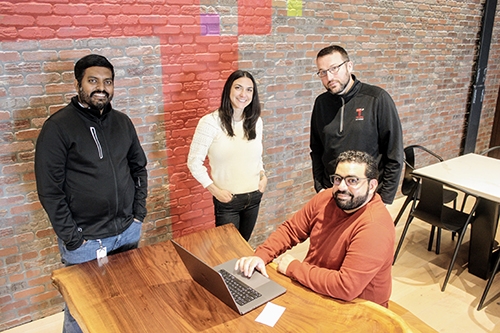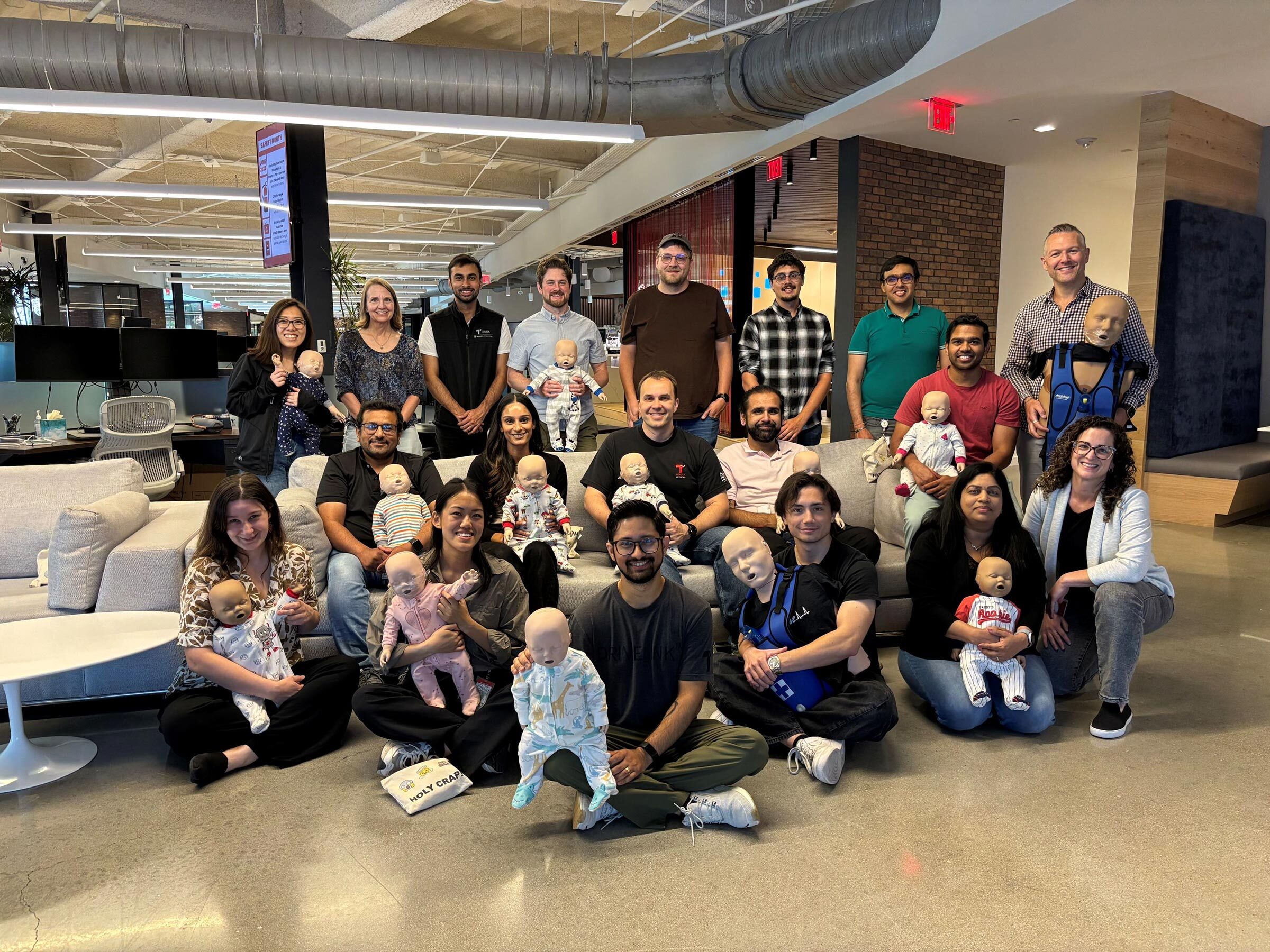Saleh would know something about innovation. He’s studied the millions of lines of code a car can produce and turned around and asked what can I help produce?
As a member of TCNA’s Mobility team, he and his fellow team members work with stakeholders within global Toyota Connected companies, Toyota Motor North America’s (TMNA) Connected Technologies, and even Toyota Motor Corporation in Japan to get ahead of what’s next.
The term “mobility” can seem so nebulous. Various companies have used it for everything from ridesharing to scooters to cars that forego traditional ownership models. But the future of mobility isn’t so much nebulous as it is yet to be refined; mobility is shared, connected, autonomous, and electric. The automotive industry has not changed this rapidly since the horse lost to the horseless carriage and internal combustion engines allowed drivers to travel from city to city and state to state instead of simply within their communities more than 100 years ago.
The auto industry is again ripe for revolution, which is where TCNA’s Mobility team sees opportunity in how customers experience cars.

Senior Product Owner Jennifer Lerman is a career-long agent of change. She has spent much of her career in product design and strategy – and, more specifically, how customers actually use new products in order to refine them to ensure the intention and actuality are one and the same. For instance, prior to TCNA when Lerman worked with a major airline, it was in the process of switching from using paper tickets to QR codes. Engineers needed to ensure the process of going digital and using the app was seamless.
“How do you make that make sense when you're used to handing a person a piece of paper? How does this become a new mechanism for granting someone access to something?” she asked. “The point of the app at that time was really more like flight status, day of travel.
“But, what about the journey of your travel experience? How do we get you through the airport? How do we let you know what's going on your flight? What about shopping and booking? What about flight disruptions? What about seats? It's similar to all big companies with big, old legacy systems.”
The Mobility team’s job is to meet customers where they are and guide them into the present and future.

An Immediate Difference
In 2017, Saleh joined TCNA as its 49th employee. It’s an independent Toyota company and, at the time, very much felt like the startup it was. In the earliest years, Saleh used his experiences as a Toyota and Lexus owner as references. When TMNA launched its Patent-a-Thon, an internal event for engineers from all different divisions and companies to confer with patent attorneys, Saleh came with a reem of ideas.
“I always look at things and ask myself, ‘Why can't we do this thing? Why can we do that thing? Or, this is a great thing; how can we improve it? What surrounds you in the car is great. It's 99% great. How can we get it to 100%?’”
“Toyota and Lexus vehicles have a long reputation for reliability,” said Saleh. “But, I noticed we took a conservative approach to technology compared with some competitors because our cars are designed to last. Some of my first patent ideas were built on platforms we already had in our cars to make an immediate difference.”
Saleh’s very first patent submission was an idea for contextual services based on geofencing, which he began working on in 2018.
Lerman’s first project at TCNA was working on a keyless vehicle-on-demand app that eventually became HUI for Toyota’s Hawaiian distributor, Servco. As a product owner, Lerman’s inquisitiveness benefited her, linking stakeholders, getting to core issues, and creating roadmaps toward solving problems. Whether an airline, a convenience store, a phone app, or in-vehicle operations, Lerman’s first step in any situation is to simply go and observe what customers are doing now and how it can be made better.
Genchi Genbutsu – to go and see – is a core tenet of the Toyota Production System. And, it turns out, it’s essential to seeing what customers actually want and how they will use it.
“When you build these experiences, it should resonate with what customers are looking for,” she said. “It's contextual. It's engaging.”

Innovate to Implement
“Innovation for the sake of it is great,” said Lerman. “But, what I am personally trying to do is make things that make it to production.”
Lerman said that, when developing ideas, her process is to shortlist good ideas and deep dive into them, from intended customers, interviews and verbatims, and putting together a roadmap from beginning to the ideal finished product.
Saleh is also a firm believer in shortlisting ideas that can lead to quick wins.
“I own a new-for-2018 Camry, which I bought in the first few weeks after it was released. I’d focus in on software functions that few outside the company might even notice,” he said. “My wife drives a 2022 Lexus RX 350. It’s fun to compare the cars to see how much has improved from 2018 to 2022.”
Saleh has contributed to those improvements, aiding the hundreds of engineers in the U.S., Japan, and elsewhere who’ve constantly improved vehicles throughout their lifecycles. Saleh studies the capabilities of Toyota and Lexus vehicles and what competitors in the industry offer. Then, he wonders “What’s next?”
Likewise, Lerman’s projects require her to be as much an engineer and product owner as they do a communicator, reaching across companies and cultures to find commonalities within various engineering units. Much of her work focuses on communication.
“It can be tricky, but our goal is to create a global vision,” she said. “My attitude is always to be warm and inclusive when it comes to making sure we have the right people to make things happen.”
Saleh knows some ideas can’t always be put into production immediately due to technological or other constraints, but he doesn’t see any conflict in philosophy in balancing TCNA’s needs both in the present and for tomorrow.
“If you'd told me five years ago that the metaverse will become part of the project that we're working on, I probably wouldn’t have believed you,” Saleh said. “There are projects we’re working on that might still be a decade out, from services for EVs or autonomous driving to Bitcoin or the blockchain.”
Lerman agrees.
“Data is going to change over time. Some markets are very mature with technologies, and some are in their infancy,” she said. “Attitudes are going to change. How do we make these data-driven decisions based on what we see people doing today?”
Saleh added, “Technology evolves. We always need to think ahead and think about solutions for problems that might arise in the future – not just today. Chances are someone is already solving today’s problems. But 10 years from now – that’s where your ideas might still be unique and you have the ability to add a tremendous amount of value.”
